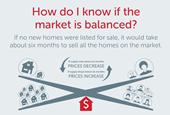
After you’ve applied for a loan, your chosen lender will review many factors to determine your eligibility. One of the most important factors is your debt-to-income ratio, which evaluates your ability to responsibly repay a mortgage bill each month.
What is the point of a debt-to-income ratio?
Debt-to-income (DTI) ratio is calculated to make sure that your housing-related expenses, including your mortgage, won’t take up too much of your total income. To determine your DTI ratio, your lender will review your total debt against your gross monthly income. In general, less debt means more buying power.
How is debt-to-income ratio calculated?
1. The front-end ratio
First, your lender will calculate your front-end ratio (often called the housing ratio), which shows the percentage of your monthly income that would go toward Principal, Interest, Taxes and Insurance (PITI).
To calculate your own front-end ratio, divide your PITI by your gross monthly household income — which is the amount earned before taxes or other deductions. For example, if your gross monthly income is $6,500, and the monthly PITI of your desired home would be $2,000, you would have a front-end ratio of about 31 percent.
PITI / Gross income = Front-end ratio
2,000 / 6,500 = .307
Generally, front-end ratios should be between 28-33 percent of a borrower’s income.*
2. The back-end ratio
The back-end ratio shows the percentage of your gross monthly income needed to cover your housing (PITI) and other monthly debt obligations. These obligations include credit card payments and installment debt like car loans, student loans and child support, but not general expenses like food or fuel.
If you are calculating your own back-end ratio, you should add up your PITI and other monthly debt obligations, and divide that by your gross monthly income. If the borrower from the above example has $550 in monthly student loan and car loan bills, then his total monthly debt obligations (including his PITI) could be $2,550. With a gross monthly income of $6,500, this borrower’s back-end ratio would be 39 percent.
(PITI + total monthly debt obligation) / gross income = back-end ratio
(2,000 + 550) / 6,500 = .392
Typically, back-end ratios should be between 36-42 percent of a borrower’s income.*
How can I lower my debt-to-income ratio?
If your debt-to-income ratio doesn’t fall within the ratio threshold, you can lower it by either lowering your anticipated PITI or by reducing your monthly obligations.
For example, if you were dreaming of a large riverfront home in Stillwater, but your debt-to-income ratio is too high, you could look for a less expensive “starter home” that is within your means. You could also work with your REALTOR® to find a nearby home with lower taxes, as housing taxes are an important component of the PITI calculated in your debt-to-income ratio.
Another idea is to sign up for your bank’s online budgeting system to find out how much you spend on food, entertainment, lattes and more. Mint is another popular site and app that can help you track patterns in discretionary spending. Most people find that with a few minor tweaks in habit, they can put away more each month than previously assumed.
Getting started
Use this affordability calculator to see how much you may be able to afford, taking into account your individual debt, down payment savings, interest rate and other factors.*
If you’re ready to start the home buying process, reach out today, and we can help you determine your buying power. There’s no obligation or pressure, and sometimes speaking with an expert is all you need to determine the next step.
*DISCLAIMER: There is NO WARRANTY, expressed or implied, for the accuracy of this information or its applicability to your financial situation. Please consult your own financial advisor or home mortgage consultant to determine your individual buying power.








